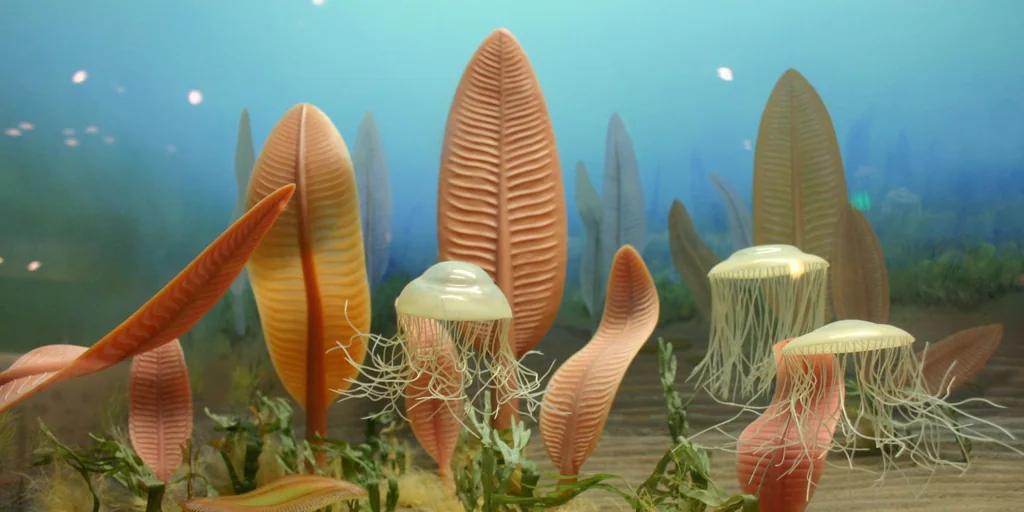Life flourished despite the collapse of Earth’s magnetic field 590 million years ago.

Between 591 and 565 million years ago, when the first forms of complex life appeared on Earth, our planet’s magnetic field weakened so much that it was on the verge of extinction. But this was not catastrophic for those creatures who were exposed to harmful solar and cosmic radiation, but coincided with a significant increase in oxygen levels in the atmosphere and oceans, which in turn contributed to the rapid diversification of these primitive fauna. In other words, the collapse of our magnetic shield at that time could have been beneficial to life. But how was this possible?
According to a study recently published in the journal Nature Communications Earth & Environment by an international team of researchers coordinated by the University of Rochester in New York, a low magnetic field that allowed more hydrogen to escape into space may have contributed to an increase in oxygen levels in the atmosphere, giving a powerful boost evolution.
Ediacaran fauna
About 600 million years ago, the “complex animals” inhabiting the Earth consisted of a series of soft-bodied creatures known as the “Ediacaran fauna.” From today’s point of view, these are very simple organisms, but they were the first multicellular creatures on the planet, the very first animals. And the fossil record clearly shows that these organisms diversified significantly in both complexity and phyla between 575 and 565 million years ago.
Previous studies have shown that this sudden diversification is associated with a significant increase in oxygen levels in the atmosphere and ocean that occurred during the same period. But no one was clear how or why such an increase in oxygen content occurred.
In 2019, another group of scientists studying ancient magnetic patterns in rocks in Canada reported in the journal Nature Geoscience that about 565 million years ago, the Earth’s magnetic field reached its lowest known level. That is, both events (a weakening of the magnetic shield and an increase in oxygen levels) occurred almost simultaneously. But so far no one has been able to establish a reliable connection between these two things. A new study appears to have achieved something.
In search of truth
Led by Wentao Huang of the University of Rochester, the researchers excavated and studied a series of igneous rocks from South Africa that formed billions of years ago, and then compared the crystals they contained to those from 591-million-year-old Brazilian rocks. These crystals contain small fragments of magnetic minerals that preserve, frozen in time, valuable information about the state of the Earth’s magnetic field at the time the crystals formed.
Thus, the researchers confirmed that 2000 million years ago, in the middle of the Paleoproterozoic, the Earth’s magnetic field was strong and stable. But 1.5 billion years later, 591 million years ago, it became 30 times weaker, in fact the lowest point ever measured. According to the study, this situation of weakness lasted for at least 26 million years, between 591 and 565 million years ago. An interval that, oddly enough, coincides with an increase in oxygen levels between 575 and 565 million years ago, at the end of the Ediacaran, during which an explosion of biodiversity occurred.
“The new data,” Huang and colleagues write, “strengthen the idea of a potential link between Ediacaran evolution and macroscopic animals.” Although the coincidences were too tantalizing to be attributed to mere chance, the researchers had another hurdle to overcome: How could an extremely weak magnetic field cause an increase in oxygen in the atmosphere?
After developing various models, Huang and his colleagues suggest that this weakened magnetic field may have allowed more hydrogen ions to escape into space, leading to higher oxygen levels in the seas and skies and facilitating the diversification of Ediacaran life.
Therefore, the long and eventful history of life must now include this new and amazing chapter, during which primitive Ediacaran life seized its moment just as the Earth’s magnetic field disappeared. Which, in turn, left the door open for the “Cambrian Explosion” that occurred immediately after this (about 540 million years ago), when Nature burst into endless plans that led to the emergence of families of living beings that were different from reality.